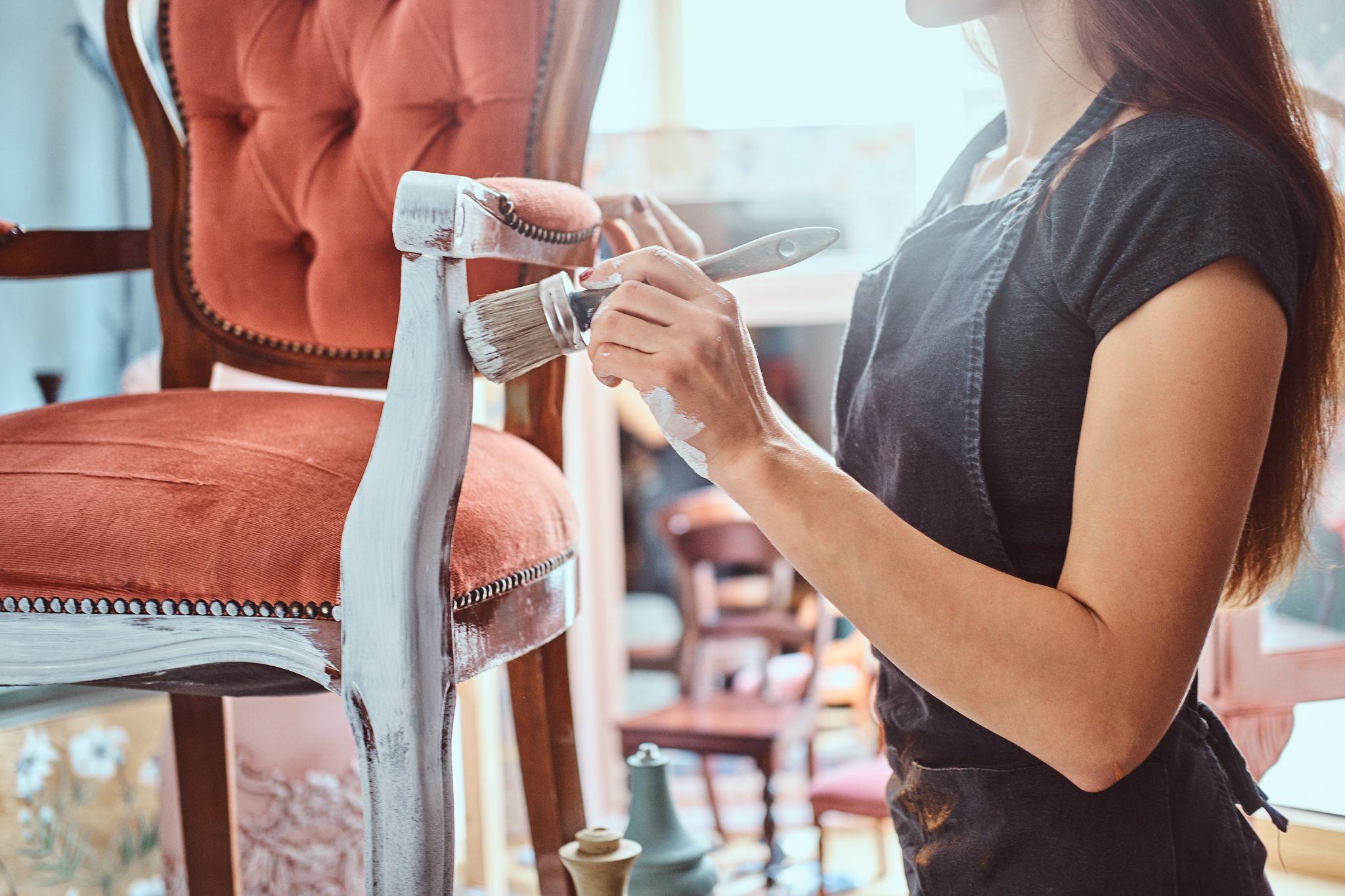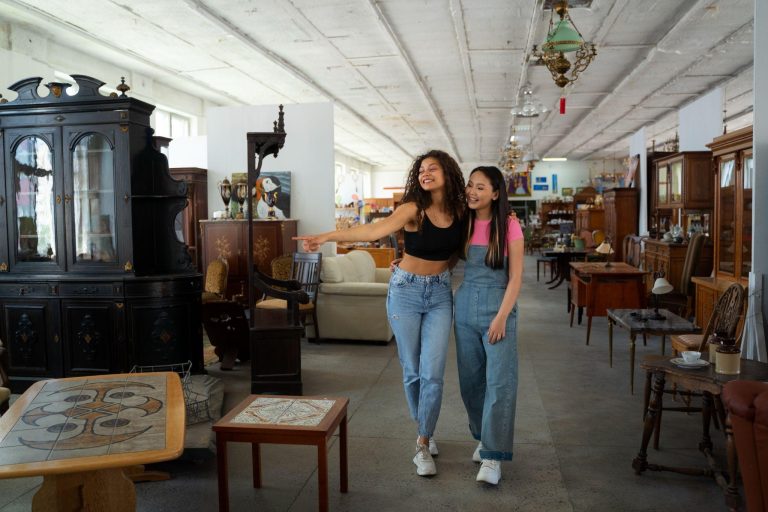Bringing vintage furniture or second-hand finds into your home can be an exciting way to add character and charm to your space. However, these pieces may also come with unwanted guests—pests that have made a home within the furniture’s materials.
While many people consider bed bugs and termites the primary concerns, other pests like carpet beetles, spider beetles, and mold mites can also cause problems. Before welcoming a second-hand item into your home, it’s crucial to inspect, clean, and, if necessary, consult a pest control specialist to ensure your new treasure doesn’t bring an infestation.
What Pests Might Be Hiding in Second-Hand Furniture?
Second-hand furniture can harbor a range of pests, depending on its material, age, and previous storage conditions. Upholstered furniture is particularly prone to bed bugs, which hide in seams, crevices, and wooden frames. These resilient pests are difficult to detect until an infestation grows. Wood-boring insects, such as powderpost beetles and termites, are another common issue, especially in antique furniture. Powderpost beetles leave fine, sawdust-like frass, while termites hollow out wood from the inside.
Carpet beetles pose another risk, particularly for furniture with wool, silk, or cotton upholstery. These pests feed on natural fibers, gradually damaging fabrics. Cockroaches may also lurk in second-hand furniture stored in damp, dark places, particularly in drawers or cushions where food crumbs might be present. Moths, too, can be a concern, especially if the furniture contains wool upholstery or vintage rugs where larvae can feed.
Beyond the well-known pests, some lesser-known but equally problematic invaders include spider beetles, often mistaken for bed bugs due to their reddish-brown appearance. Psocids, or booklice, thrive in humid environments and may infest old wooden furniture with mold.
Silverfish, commonly found in drawers and storage trunks, feed on paper lining, glue, and fabric starch. Rodents can also leave behind gnawed wood, droppings, and nesting materials, particularly if the furniture was stored in an attic or garage. Even microscopic mold mites, which thrive in damp conditions, can signal moisture issues that attract other pests.
Signs Of Pest Infestation In Vintage Furniture
Before purchasing or bringing second-hand furniture into your home, a thorough inspection is essential. Small holes or tunnels in wooden furniture often indicate wood-boring insect activity. A fine, powdery sawdust-like residue (frass) is another telltale sign. Live or dead insects in seams, joints, cracks, or beneath the furniture should also raise concern. Other indicators include droppings, shed skins, or tiny black or brown fecal spots, particularly for bed bugs and roaches.
Odors can also signal an infestation. A musty or slightly sweet smell may indicate bed bugs, while an almond-like scent could be a sign of certain wood-boring insects. Some pests, like termites, even make faint clicking or rustling sounds within the wood. Tapping on wooden surfaces and listening for hollow sounds can help identify hidden damage. If unsure, placing a sticky trap under the furniture overnight can reveal the presence of hidden pests.
Materials More Prone To Pest Infestations
Certain materials are more susceptible to pests than others. Wood is highly vulnerable to termites, powderpost beetles, and carpenter ants, especially if it’s untreated or aged. Upholstery and fabric, particularly those made from wool, cotton, and silk, attract bed bugs, carpet beetles, and moths. Leather and vinyl are less likely to be infested but can still harbor pests in seams or cracks.
Particleboard and plywood, often used in budget furniture, are particularly at risk because they absorb moisture, making them ideal habitats for roaches and mold. Among the safest second-hand furniture materials are glass, metal, and stone, which are naturally pest-resistant. However, wooden frames or linings, such as those found on mirrors or tables, still require careful inspection.
Best methods to clean and treat second-hand furniture before bringing it into your home
Ensuring your second-hand furniture is pest-free before bringing it indoors requires a combination of thorough cleaning and targeted treatment. First, isolate the furniture in a garage, shed, or outdoor space for inspection. Vacuum all surfaces, seams, cracks, and crevices using a HEPA-filter vacuum, and immediately dispose of the vacuum bag.
Steam cleaning is highly effective for upholstered furniture, as heat above 120°F kills bed bugs, eggs, and other pests. Small wooden pieces, cushions, or pillows can be sealed in plastic bags and placed in the freezer for 72 hours to eliminate insects. If possible, placing the furniture in direct sunlight on a hot day can naturally kill pests.
For hard surfaces, wiping down wooden, metal, and plastic furniture with a mixture of white vinegar and water or a mild bleach solution can disinfect and deter pests. If an infestation is suspected, diatomaceous earth, boric acid, or targeted insecticides may be necessary. More advanced techniques, such as ozone treatment, dry ice blasting, and controlled freezing, are also effective but typically require professional assistance.
Natural and DIY Pest Treatments
Several natural remedies can help eliminate pests without harsh chemicals. Diatomaceous earth is particularly effective against bed bugs, roaches, and beetles when sprinkled into crevices and left for a day before vacuuming. A mixture of white vinegar and essential oils, such as tea tree or lavender, can deter bed bugs and moths.
Boric acid powder works well against roaches and beetles, while cedarwood oil or chips naturally repel moths and some beetles. For termites, orange oil is a highly effective natural killer, while cucumber peels can repel cockroaches. While these methods work well for minor infestations, severe cases may require professional pest control intervention.
When to Call a Pes Control Professional
DIY methods may not be enough for major infestations. If the furniture has active bed bugs, termites, or powderpost beetles, professional treatment is often necessary. Structural damage caused by wood-boring insects or repeated pest issues despite home treatments also warrant expert intervention. Specialized treatments like heat fumigation or anoxic (oxygen-free) fumigation may be required for high-value antique pieces.
Professional pest control is also recommended when purchasing antique furniture from overseas, as it may contain pests uncommon in the U.S. Additionally, furniture previously stored in a unit can be prone to roaches and rodents. If allergies are a concern, professional cleaning can help remove dust mites and mold remnants from past infestations.
Preventative Pest Control For Second-Hand Furniture In The Future
Taking preventative steps can help keep second-hand furniture pest-free. Sealing and finishing wooden furniture with varnish or sealant can deter insects. Upholstered items can be protected with bed bug-proof covers. Maintaining low humidity levels with a dehumidifier reduces the risk of mold mites and other moisture-loving pests.
Regular inspections and cleaning help catch any signs of infestation early. Using natural repellents, such as cedar sachets or lavender, in storage areas can also help keep pests away. Additional measures, like placing silica gel packs in drawers to absorb moisture or sealing wood cracks with candle wax, offer extra protection.
Can Furniture Restoration Prevent Pests?

Refinishing second-hand furniture can help prevent pest infestations, but only if done correctly. Sanding down wood and applying a fresh polyurethane or shellac sealant can protect against wood-boring insects. However, simply painting over infested wood will not eliminate the problem. Old glue should be removed before refinishing, as it can attract silverfish and roaches.
For upholstered furniture, refinishing won’t help if pests have infested the stuffing or frame. In such cases, replacing the fabric and stuffing may be necessary. If restoring vintage furniture, it’s essential to treat all surfaces, including hidden ones, to prevent future pest problems.
Still want to get vintage furniture?
Second-hand furniture can be a fantastic addition to your home, but it’s essential to inspect, clean, and treat pieces properly to prevent infestations. By thinking like a pest—considering where they would hide and how they might survive—you can make smarter purchasing decisions. Taking the time to ensure your vintage finds are pest-free will allow you to enjoy their charm without unwelcome surprises.

